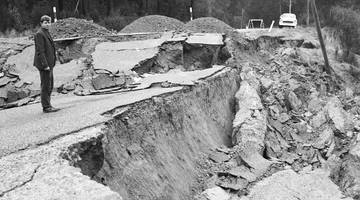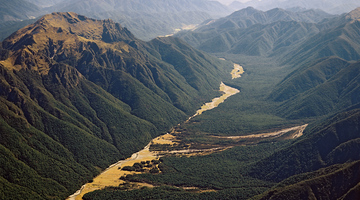Slow slips are silent earthquakes that occur below the Earth’s surface over a large area, unlike traditional earthquakes we feel that occur in a relatively small region.
Before discovering slow slip events, earthquakes were thought to be the only way the Earth’s crust could relieve the pent-up stresses caused by the moving tectonic plates.
Scientists are now actively working to understand the relationship between slow slips and earthquakes. There is evidence of earthquake swarms accompanying some slow slip events, suggesting a slow slip may increase stress in surrounding areas and could push an already stressed fault closer to rupture. However, in other cases, slow slip events can relieve stress on a fault, and this might postpone an earthquake.
Understanding the relationship between slow slip events and earthquakes and the collation of slow slip data will enable better earthquake forecast modelling.
This animation is a visualisation of a slow slip event.
Transcript
Voice over
Slow slip events or slow slip earthquakes represent occasional episodic movement between the tectonic plates – the Pacific and Australian plates – here in New Zealand.
Earthquakes that we feel involve a sudden violent release of energy, due to fast movement along a fault between two pieces of the Earth’s crust.
Slow slip events are similar to earthquakes but involve a much slower energy release over weeks to months. Because of the slow energy release, we cannot feel them.
Slow slips can’t be easily detected by seismographs and have only been recognised by GPS units that have enabled scientists to track millimetre shifts in land movement.
Deep under the Earth’s surface where the plates meet is called a fault line. At depth, there is a steady creeping zone where plates slip past with little resistance. At shallower depths, due to friction along the fault, the plates temporarily lock – or get stuck together - in the slow slip zone.
When this zone is stuck, the crust surrounding the area slows in movement and is scrunched or contracted.
A slow slip event occurs as the plates temporarily become unstuck and the built-up contraction prior to the slow slip is released, allowing the scrunched crust to bounce back to its original shape. Slow slip events can last from weeks to years.
Acknowledgements
The Science Learning Hub acknowledges geophysicist Dr Laura Wallace (GNS Science) in developing this animation.




